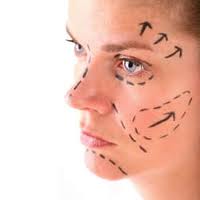 Bulletin: The US Dept. of Health and Human Services modified the final ruling that required new health insurance plans to cover contraceptive services without a copay or deductible by August 2012 based on comments received from the public. To quickly recap: many non-profit religious employers objected to this new policy because their religious beliefs did not support contraception. Meanwhile, many women's groups felt that this would deny many women who needed or wanted contraception (but could not afford it) this financial benefit. The current administration originally allowed an exception for religious employers but it appears that the exception will be limited. The temporary compromise, giving non-profit employers who, based on religious beliefs, did not want to include contraception access within their plans, an additional year to adapt to the new ruling (to 2013). Watch for both sides of the political spectrum to express their outrage or support of this compromise during this election year. Hopefully, women's health advocates will continue to monitor this issue and continue to support access to products that reduce the number of unintended pregnancies and abortions in our country.
Bulletin: The US Dept. of Health and Human Services modified the final ruling that required new health insurance plans to cover contraceptive services without a copay or deductible by August 2012 based on comments received from the public. To quickly recap: many non-profit religious employers objected to this new policy because their religious beliefs did not support contraception. Meanwhile, many women's groups felt that this would deny many women who needed or wanted contraception (but could not afford it) this financial benefit. The current administration originally allowed an exception for religious employers but it appears that the exception will be limited. The temporary compromise, giving non-profit employers who, based on religious beliefs, did not want to include contraception access within their plans, an additional year to adapt to the new ruling (to 2013). Watch for both sides of the political spectrum to express their outrage or support of this compromise during this election year. Hopefully, women's health advocates will continue to monitor this issue and continue to support access to products that reduce the number of unintended pregnancies and abortions in our country.
The full statement by U.S. Department of Health and Human Services Secretary Kathleen Sebelius issued January 20, 2012 is found below:
In August 2011, the Department of Health and Human Services issued an interim final rule that will require most health insurance plans to cover preventive services for women including recommended contraceptive services without charging a co-pay, co-insurance or a deductible. The rule allows certain non-profit religious employers that offer insurance to their employees the choice of whether or not to cover contraceptive services. Today the department is announcing that the final rule on preventive health services will ensure that women with health insurance coverage will have access to the full range of the Institute of Medicine’s recommended preventive services, including all FDA -approved forms of contraception. Women will not have to forego these services because of expensive co-pays or deductibles, or because an insurance plan doesn’t include contraceptive services. This rule is consistent with the laws in a majority of states which already require contraception coverage in health plans, and includes the exemption in the interim final rule allowing certain religious organizations not to provide contraception coverage. Beginning August 1, 2012, most new and renewed health plans will be required to cover these services without cost sharing for women across the country.
After evaluating comments, we have decided to add an additional element to the final rule. Nonprofit employers who, based on religious beliefs, do not currently provide contraceptive coverage in their insurance plan, will be provided an additional year, until August 1, 2013, to comply with the new law. Employers wishing to take advantage of the additional year must certify that they qualify for the delayed implementation. This additional year will allow these organizations more time and flexibility to adapt to this new rule. We intend to require employers that do not offer coverage of contraceptive services to provide notice to employees, which will also state that contraceptive services are available at sites such as community health centers, public clinics, and hospitals with income-based support. We will continue to work closely with religious groups during this transitional period to discuss their concerns.
Scientists have abundant evidence that birth control has significant health benefits for women and their families, it is documented to significantly reduce health costs, and is the most commonly taken drug in America by young and middle-aged women. This rule will provide women with greater access to contraception by requiring coverage and by prohibiting cost sharing.
This decision was made after very careful consideration, including the important concerns some have raised about religious liberty. I believe this proposal strikes the appropriate balance between respecting religious freedom and increasing access to important preventive services. The administration remains fully committed to its partnerships with faith-based organizations, which promote healthy communities and serve the common good. And this final rule will have no impact on the protections that existing conscience laws and regulations give to health care providers.

 National Science Foundation (NSF) —which is the leading source of Federal grants for many fields of basic research crucial to US technology development and job creation—is also calling upon universities and research institutes to adopt similar policies for their employees and grantees.
National Science Foundation (NSF) —which is the leading source of Federal grants for many fields of basic research crucial to US technology development and job creation—is also calling upon universities and research institutes to adopt similar policies for their employees and grantees. pregnant women with gestational hypothyroidism may go undetected each year.
pregnant women with gestational hypothyroidism may go undetected each year. Women typically find it harder to lose weight and inches than men. This, in part, is due to the fact that men have more lean muscle mass and a higher resting metabolic rate. Another issue that makes weigh loss challenging for females: women store fat differently from men--more of it goes to their thighs, buttocks, and hips, where it can be harder to shed. Finally, female hormones promote the storage of calories as fat, and fat takes up more space than muscle.
Women typically find it harder to lose weight and inches than men. This, in part, is due to the fact that men have more lean muscle mass and a higher resting metabolic rate. Another issue that makes weigh loss challenging for females: women store fat differently from men--more of it goes to their thighs, buttocks, and hips, where it can be harder to shed. Finally, female hormones promote the storage of calories as fat, and fat takes up more space than muscle. Hillary Clinton changed the way Americans think about women in politics, and new Northwestern University research suggests that an affirmative action law in India is doing the same for Indian women. The research, published Jan. 12 in the journal Science, focused on the long-term outcomes of a law that reserved leadership positions for women in randomly selected village councils in India.
Hillary Clinton changed the way Americans think about women in politics, and new Northwestern University research suggests that an affirmative action law in India is doing the same for Indian women. The research, published Jan. 12 in the journal Science, focused on the long-term outcomes of a law that reserved leadership positions for women in randomly selected village councils in India. The Institute for Women's Health Research at Northwestern University publishes a monthly e-newsletter on timely issues in women's health. Our January 2012 edition focuses on scientific breakthroughs and public policies that we think could influence future research and the clinical care women women receive. We call these 'game changers'.
The Institute for Women's Health Research at Northwestern University publishes a monthly e-newsletter on timely issues in women's health. Our January 2012 edition focuses on scientific breakthroughs and public policies that we think could influence future research and the clinical care women women receive. We call these 'game changers'. Older women who take
Older women who take 
 Is it more effective to freeze your love handles, killing the fat cells between two super-cooled plates in a procedure known as cryolipolysis, or vacuum them away with liposuction? And which lasts longer, a surgical facelift or facial skin tightening via a laser?
Is it more effective to freeze your love handles, killing the fat cells between two super-cooled plates in a procedure known as cryolipolysis, or vacuum them away with liposuction? And which lasts longer, a surgical facelift or facial skin tightening via a laser? Despite some assumptions to the contrary, young women who receive recommended vaccinations to prevent human papillomavirus (HPV) infection and associated cancers do not engage in more sexually risky behavior. That is the cautious determination of a national study by The Centers for Disease Control & Prevention reported in the American Journal of Preventive Medicine. Lead study author Nicole C. Liddon, Ph.D. advised against drawing too broad a conclusion from the study, while explaining the motivation behind it.
Despite some assumptions to the contrary, young women who receive recommended vaccinations to prevent human papillomavirus (HPV) infection and associated cancers do not engage in more sexually risky behavior. That is the cautious determination of a national study by The Centers for Disease Control & Prevention reported in the American Journal of Preventive Medicine. Lead study author Nicole C. Liddon, Ph.D. advised against drawing too broad a conclusion from the study, while explaining the motivation behind it.